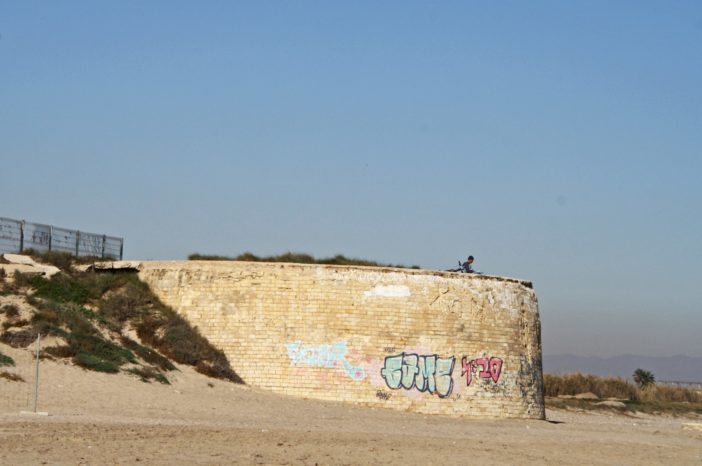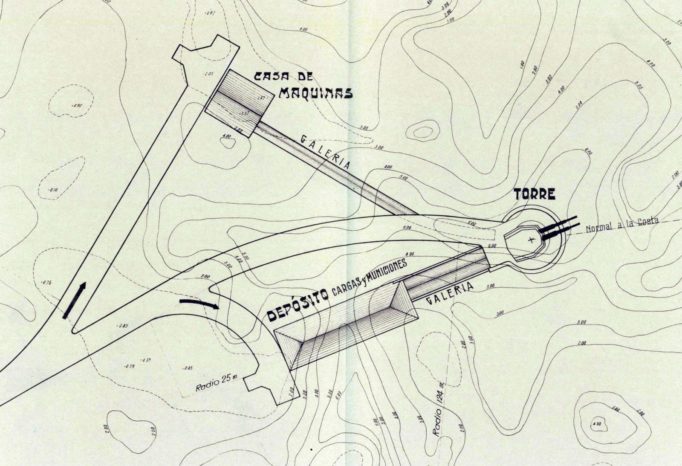El Saler bunker
El Saler’s battery is a “chin” of a piece of coastal artillery with a top casemate and an authentic daedalus of underground galleries that occupied about 500 m2.
It was built in 1938 with reinforced concrete and two casemates with two anti-aircraft machine guns were also installed, one to the left and one to the right of the tower, to protect against gradient air attacks. About 200 meters to the north, a medium-large anti-aircraft battery was located with a fixed location for the protection of bombardments at higher altitudes.
Currently, only the base of this battery at sand level, very close to the coastline, is visible. It is a circular structure with an approximate diameter of 15 meters, a sloping closed volume, with an exterior finish in tile.
The bunker itself was partially discovered in 1998 and at first its destruction was considered but media pressure finally (apparently) it was covered with sand again.
The bunkers are solid constructions and their layout usually focuses on the construction of a chamber with embrasures, where the soldiers are located with their weaponry, which, depending on the type, conditions the dimensions and morphology of the building. There may be one or more terraced rooms with communication between them through corridors. Contact with the outside is through galleries.
Its design can be varied, although the shape of an igloo is common, with circular plants and a domed roof, although there are also examples of square or rectangular bunkers and flat or vaulted roofs.
The purpose of these buildings is organizational (command posts), communicative (telecommunications posts), logistics (hangars and warehouses) or staff rest by creating large underground vaults with a single access from the outside.
The construction process begins with the preparation of the land with a trench, inside which the wooden formwork is introduced to form the walls where rounds and iron beams are introduced as reinforcement, and then the concrete is poured. At the top of these unforged walls, stones of various sizes are inserted, as a
link
to join with the roof. Once the bunker is finished, a layer of earth is deposited from the perimeter of the building almost to the level of the embrasures, thus camouflaging the position.
The interiors usually have brick furniture with benches for the position of artillery pieces, as well as spaces as a niche for the deposit of materials. The embrasures are rectangular and
splintered outwards
.
For the location of light and heavy artillery pieces, the preparation of platforms with anchors is required to place the pieces. It is necessary a base made with concrete formwork or circular masonry as a bucket, well cemented and of varied diameter depending on the weaponry to be installed.
Conveniently anchored weapons can make turns following the trajectory of enemy aircraft with their shots. At the front, a very solid parapet and two niches were built that were used to store ammunition and charges separately, and which were only mounted at the time of firing. The general spare was stored in the powder magazine, located further away for safety. Other facilities complementary to the batteries and that were located in their surroundings were, a shelter for the personnel at their service, the post of command and observation, and a little further away was the building for troop accommodation. All these points were very well connected by trenches.
In the case of the battery of El Saler , the plans of the platform to place two cannons in the Archive of Ávila are preserved.


Dades bàsiques
Southern Villages
46012 Valencia